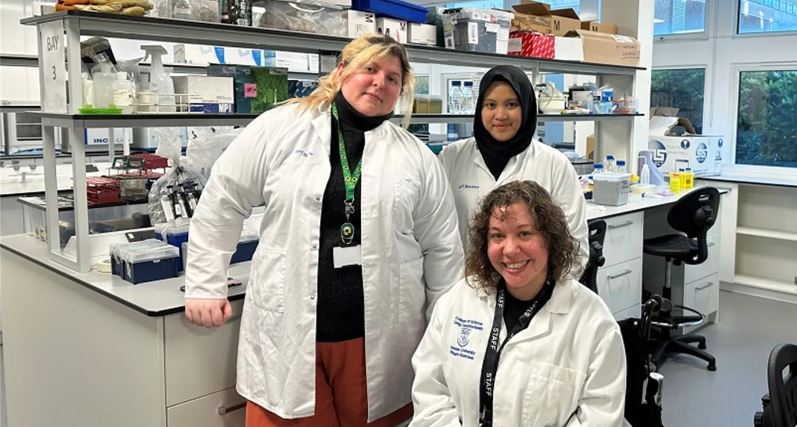A £1.2 million refurbishment of laboratories at Swansea University, just completed, will give a giant boost to research in biosciences and geography.
MAJOR BOOST TO RESEARCH IN BIOLOGICAL SCIENCES AND GEOGRAPHY WITH £1.2 MILLION LABORATORY REFURBISHMENT

Research that will benefit covers areas from biodiversity to the resilience of ecosystems, and from climate patterns of the past to the study of microbes that can break down plastics.
The refurbished laboratories house new and more modern equipment and analytical tools. They are also more spacious, which means more researchers can be at work at any one time, as well as being more accessible.
The laboratories are in the Wallace Building, a striking 1950s Grade 2 listed building on the University’s Singleton campus. It is named after Alfred Russel Wallace, the trailblazing Victorian scientist, born in south Wales, who had the revolutionary idea of evolution by natural selection entirely independently of Charles Darwin.
The departments of Biosciences and Geography are both based in this landmark building, with students following courses including zoology, biology, marine biology, and physical and human geography.
The refurbishment project was led by the University Estates team and the Faculty of Science and Engineering, working in close partnership with the main contractor John Weaver Ltd.
The new facilities are:
1 New coastal ecology laboratory: a new home for research on preserving coastal biodiversity as sea levels change and man-made structures are built to protect coastal communities.
Dr Tom Fairchild of biosciences said:
“The new lab spaces have allowed us to increase the scope of our work, including new biochemistry research looking at photopigments in seaweeds. The increased bench space allows for more users simultaneously. This will provide research staff and students with far greater lab time and greater capacity for novel and important ecological research."
2 Natural products laboratory: our research teams are developing natural alternatives to products used in pharmaceuticals, agriculture and manufacturing, to reduce the impact on the environment. For example, they are investigating how microbes can be used to break down plastic pollutants. They are also identifying novel chemicals from fungi and developing natural pesticides to protect crops from insect pests.
Professor Dan Eastwood of biosciences said:
“New equipment including robotics will allow us to sample microbes and develop new natural products more quickly. One key area to benefit is our research on the use of fungi as a natural way of controlling insect pests; our Natural Products BioHUB, linking us with industrial partners, will help make Swansea a centre for natural product innovation. The working space is also now much better for staff and students alike. Accessibility is built into the new design, which is already benefiting a current PhD student who is a wheelchair user”.
3 Stable Isotope Laboratory: based in the department of geography, the Stable Isotope Laboratory analyses chemical tracers preserved in natural archives such as tree rings, pollen, lake sediments and peat to explore the climate of the past, plant physiology and the resilience of ecosystems to environmental change.
The refurbished laboratory, with new analytical equipment, will be a national facility for archaeological dating using stable isotope dendrochronology, an advanced method of tree ring analysis.
Professor Neil Loader, who manages the laboratory, said:
"As we celebrate 70 years of geography graduates at Swansea, this refurbishment represents a significant enhancement to our research environment. The new laboratory will support our world-leading research in environmental dynamics, and also provide a facility within which to foster new international partnerships and train the next generation of geographers and environmental archaeologists."
Joan Tamlyn, Head of Business Development for John Weaver Contractors, said:
“John Weaver Contractors were delighted to strengthen our working relationship with Swansea University, successfully completing the remodelling works in this wonderful Grade II listed building.
Nigel Latham, our site manager, worked closely with the University team to ensure high-quality finishes were achieved and any design issues dealt with swiftly to ensure the project was completed on time for your staff and students. We’d like to thank the University and our subcontractors who have helped us achieve excellence in this world-class facility.”
Sustainable Futures, Energy and the Environment - Swansea University research
Article owned by Swansea University.
